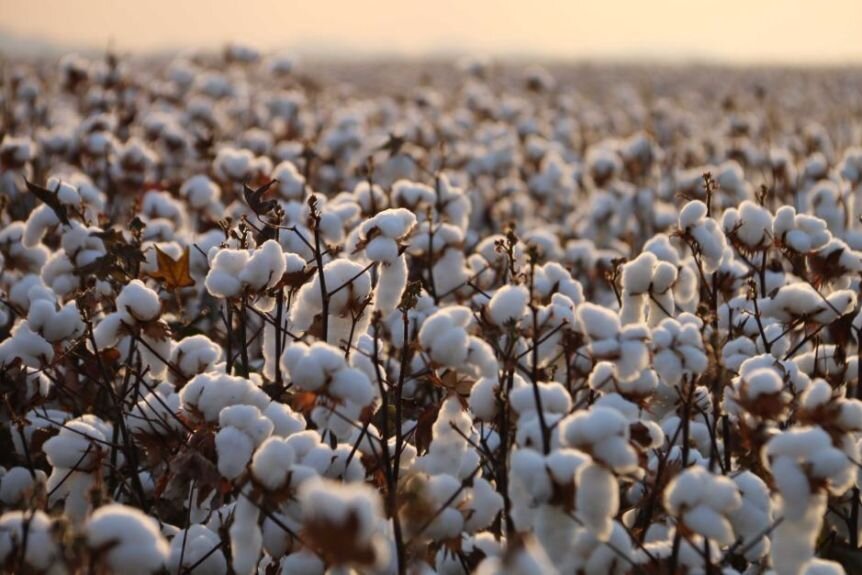Currently, two-thirds of the world’s textiles are made with synthetic materials—mostly petroleum-based organic polymers (plastics) such as polyester, polyamide, and acrylic. On the other hand, cotton, the world’s most popular natural fiber, is responsible for 16% of the world’s insecticide use—despite comprising less than 3% of the world’s farmable land.
Fashion is one of the world’s most polluting industries. Each stage of production—from seed to fiber—contributes to the degradation of soil, pollution of water, and exploitation of labourers. Compounded by pervasive advertising campaigns that guilt consumers into chasing the latest style, fashion is a global industry that harms humans, the environment, and the land.
When most people think about what to do to combat this issue, we immediately jump to solutions that hinge on the consumer’s end: reduce, reuse recycle can be translated to thrift, rewear, and repair. However, while consumer-driven demand is important, by focusing the debate between buying second-hand clothing or simply repurposing what we own, we tend to lose sight of the foundation of our clothing—which ultimately originates from the land.
As stated in Vogue’s article by Emily Farra, “we constantly hear about reducing our carbon emissions or new technology that captures carbon, but if the earth could just return to its natural, abundant state, it could fix the problem of global warming on its own.“ Two-thirds of the fashion industry’s environmental impact can be attributed to the beginning of the supply chain—the raw material level. According to Regeneration International, by transitioning 10-20% of agricultural production to best practice regenerative systems, we can sequester enough CO2 to reverse climate change and restore the global climate. By focusing on systems that enable Earth to return to its natural, abundant state, we can potentially heal the climate through the process of making our clothes.
Instead of purchasing cotton t-shirts that have been cultivated with insecticides that contaminate our water supply or synthetic materials that release microplastics that enter our food supply, we should support materials that build soil health and regenerate the land. Hemp, for example, is one of the world’s most naturally sustainable materials. It has been named a ‘wonder plant’ due to its estimated 25,000 different uses—ranging from food to fibers—and every single part of the plant can be used productively.
There are many reasons why hemp is a regenerative crop. Firstly, it is one of the fastest-growing plants in the world. As it can reach maturity within 3-4 for months, it acts as a renewable resource that can be replenished rather quickly. Secondly, it is naturally resistant to insect pests and predators, leading to less dependence on pesticides and herbicides—which cause evident damage to our water and thus food supply. Thirdly, despite being an annual—as opposed to perennial—crop, its roots extend far into the soil, serving as a glue and reducing the rates of erosion. Fourthly, their growth relies on much less water than many industrial crops like cotton, which reduces the reliance on this essential resource. Lastly, they produce high quantities of biomass which then returns to the soil and feeds nutrients back into the ground to build soil. All of these quantities combine to make this plant extremely effective at sequestering large quantities of CO2 from the atmosphere, and returning it to the ground.
Alternatively, organic cotton is a much more socially and environmentally beneficial material to be used for clothing. The production of organic cotton is a chemical-free process; similar to hemp, there is no need for excessive fertilizers and pesticides, preventing water contamination and the compromisation of workers’ health and safety. With organic cotton, manufacturers also often adhere to much more rigid and stricter manufacturing standards—enforced by campaigns such as Fairtrade Cotton, Better Cotton Initiative, and FLO International.
As much as regenerative fashion serves to benefit our climate, however, it should not be the end of our efforts. Living a regenerative life encompasses all aspects of our behaviour, and ultimately requires giving more than we take. By placing a greater value on acts that nourish other beings’ existence over our own personal gains, we can depart from the current degenerative systems and contribute towards a more just and sustainable future.
Making the shift to regenerative fashion lies not solely in the textiles and their effect on the land, but just as importantly, their impact on the people who grow it. While regenerative farming produces stronger crops and provides a healthier way of life for farmers, many fashion companies continue to employ labour from developing countries in sweatshop-like conditions. Facing few consequences, they underpay and overwork their employees and promote unethical practices at every stage of production.
While fast fashion comes at a low cost for consumers, it comes at a high cost for those who are actually making the clothes. By thoroughly evaluating companies and the products they produce, organisations such as Remake Our World and Fashion Revolution have ushered in a new standard for transparency and sustainability in the process of clothing manufacturing.
Everyone wears clothes, making the fashion industry is uniquely poised as a starting point for change. And as citizens, we can all play a role in demanding this change.

